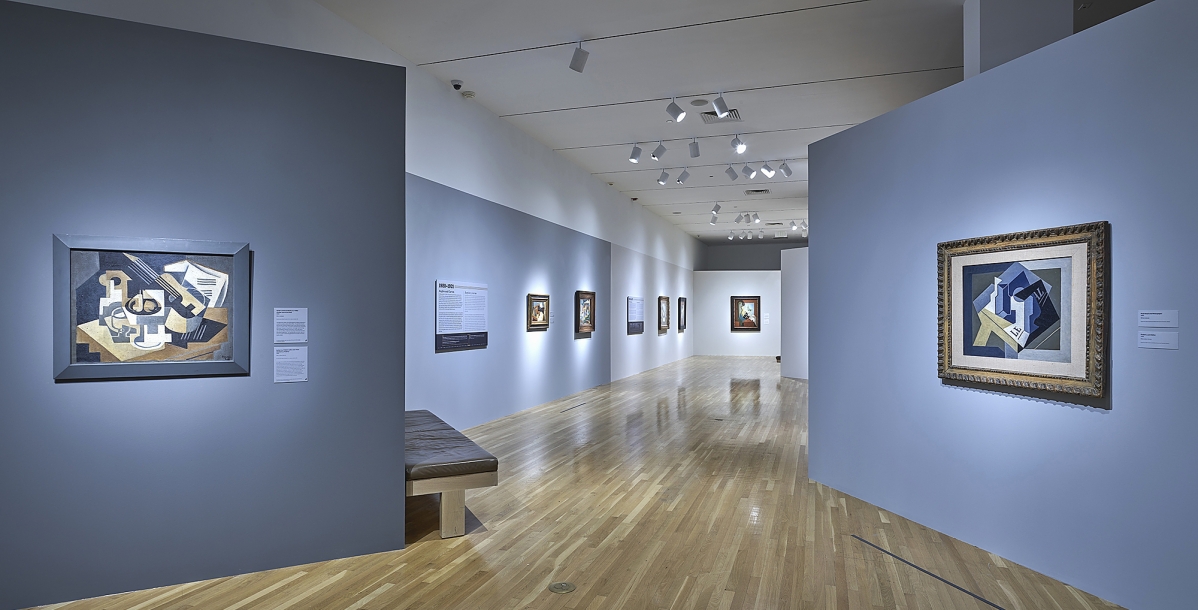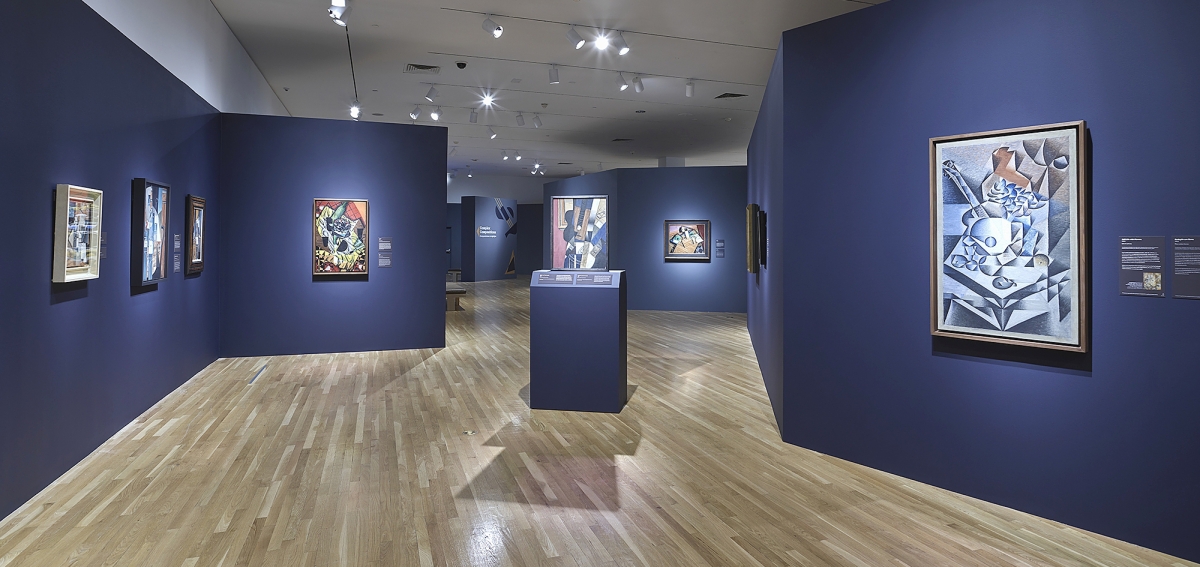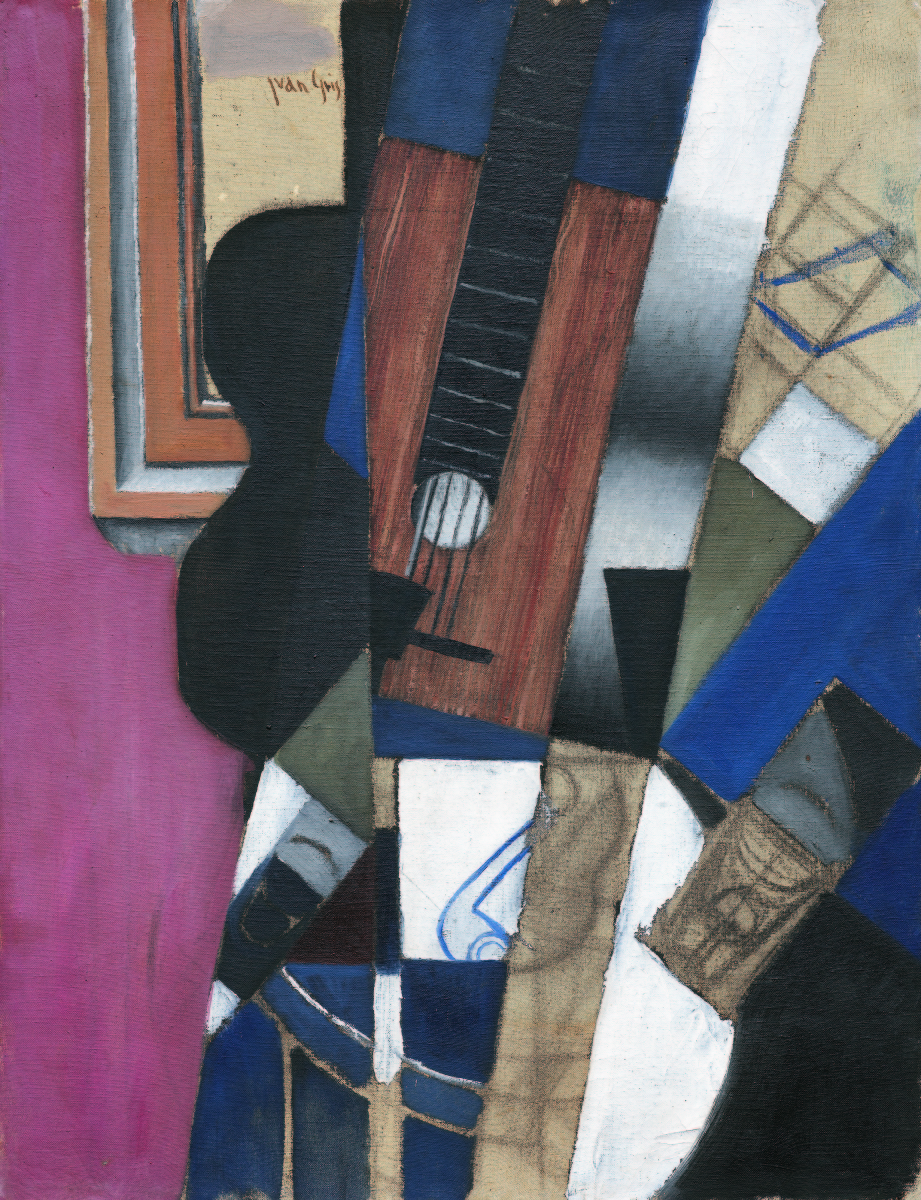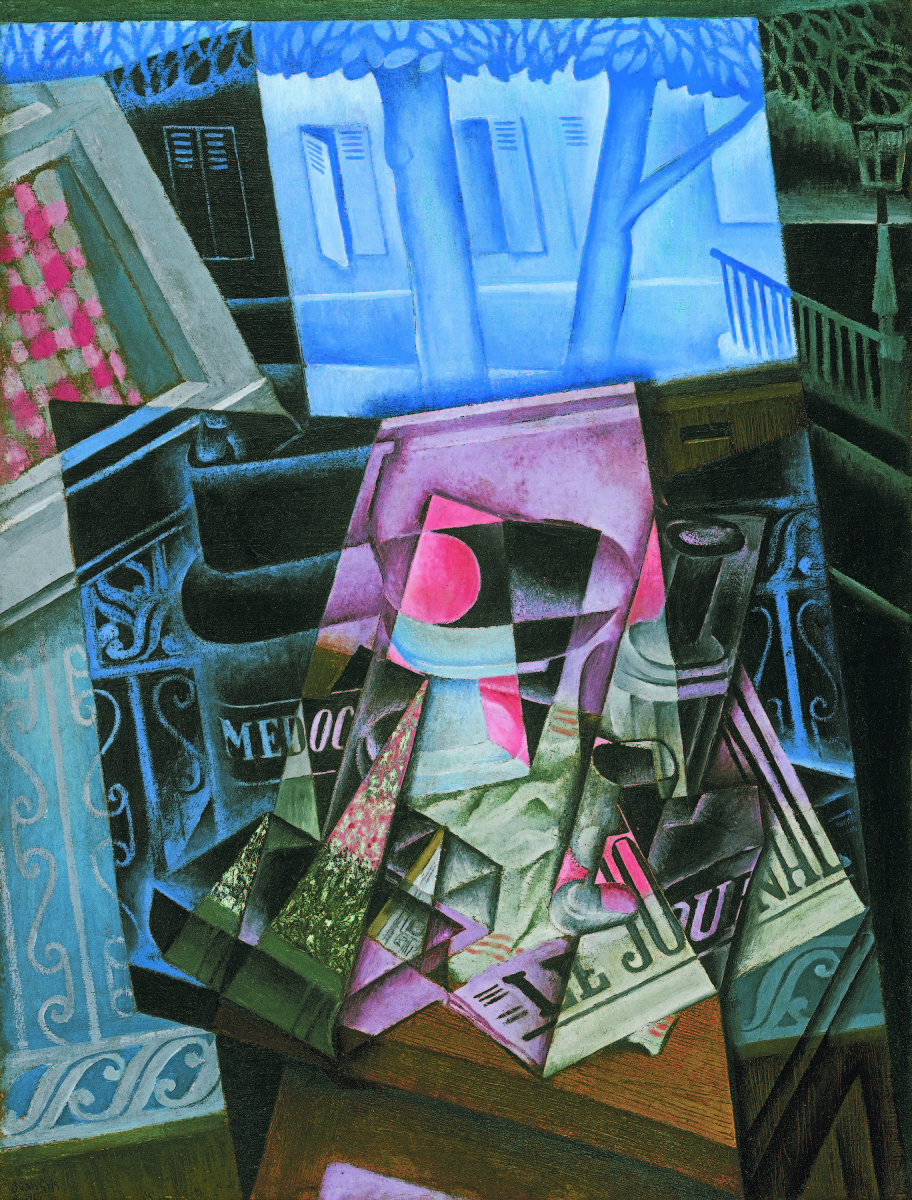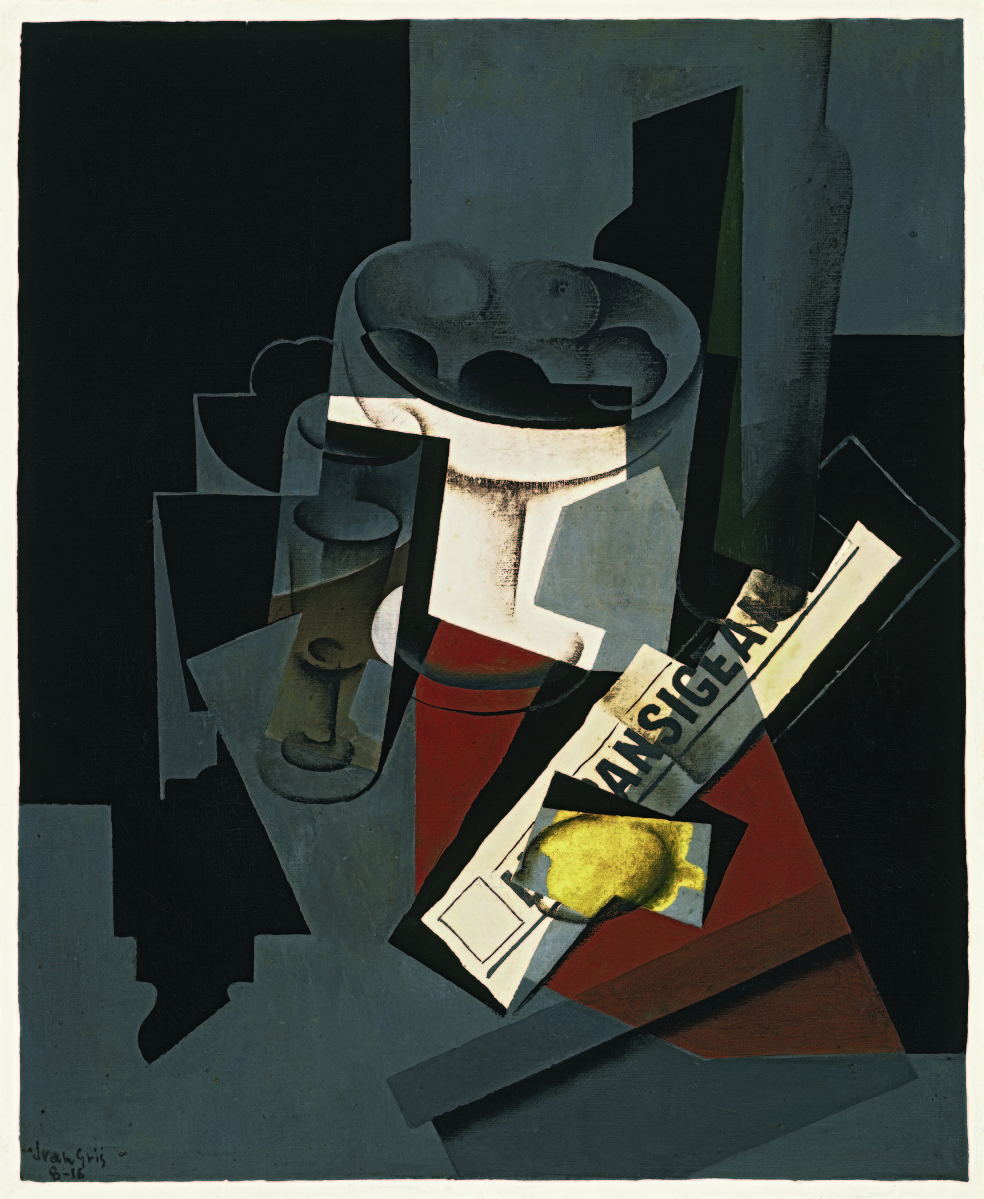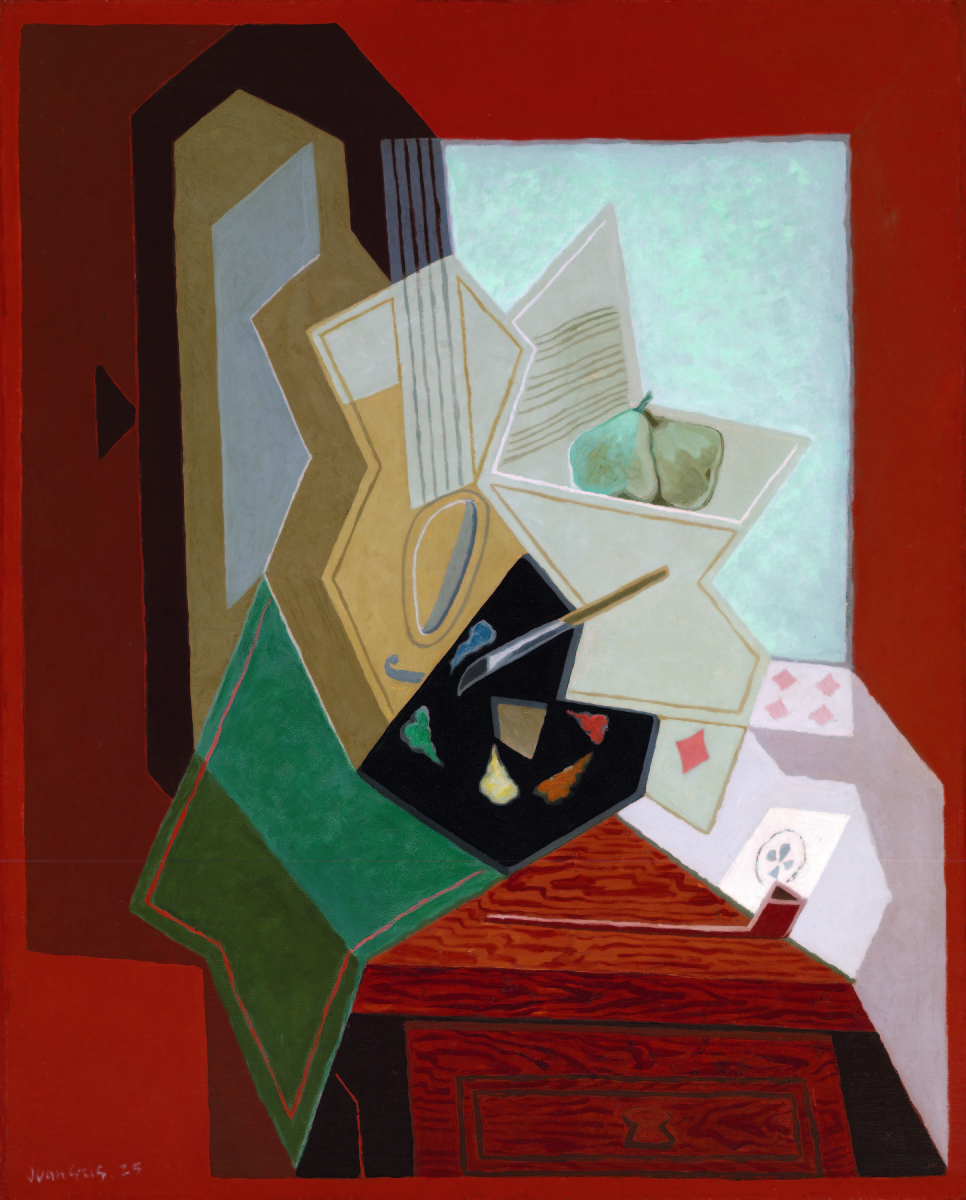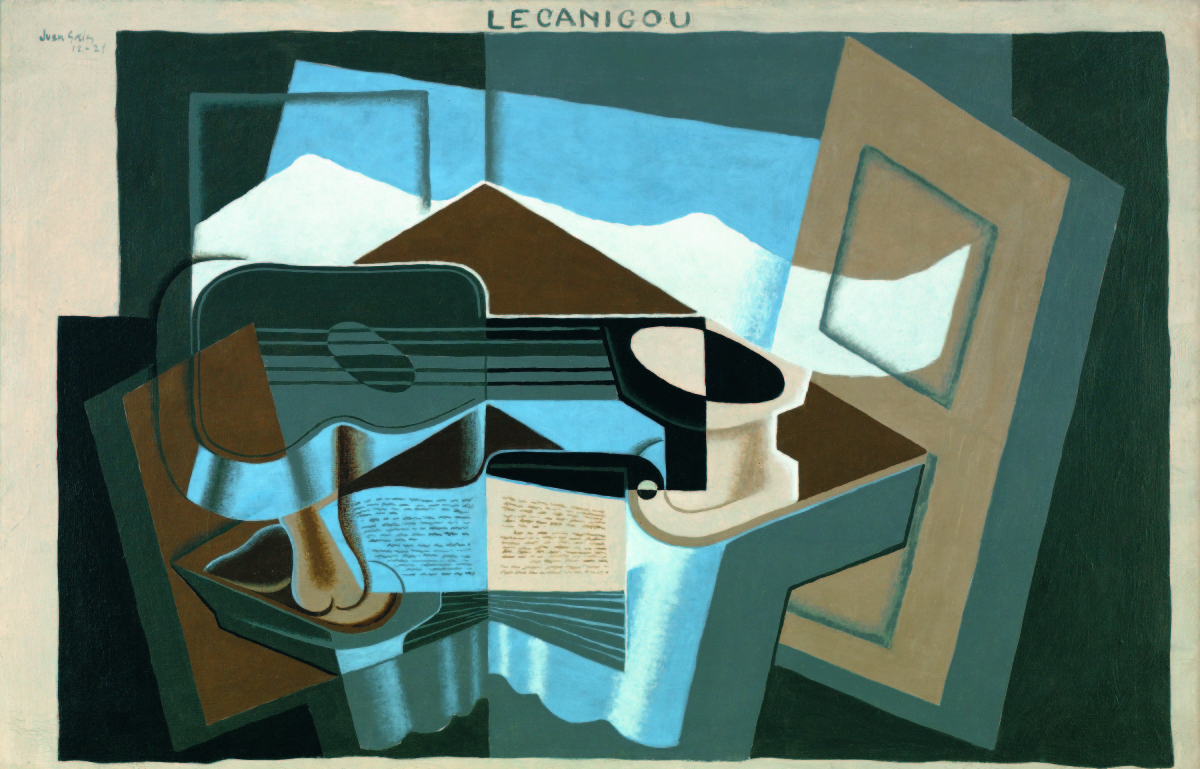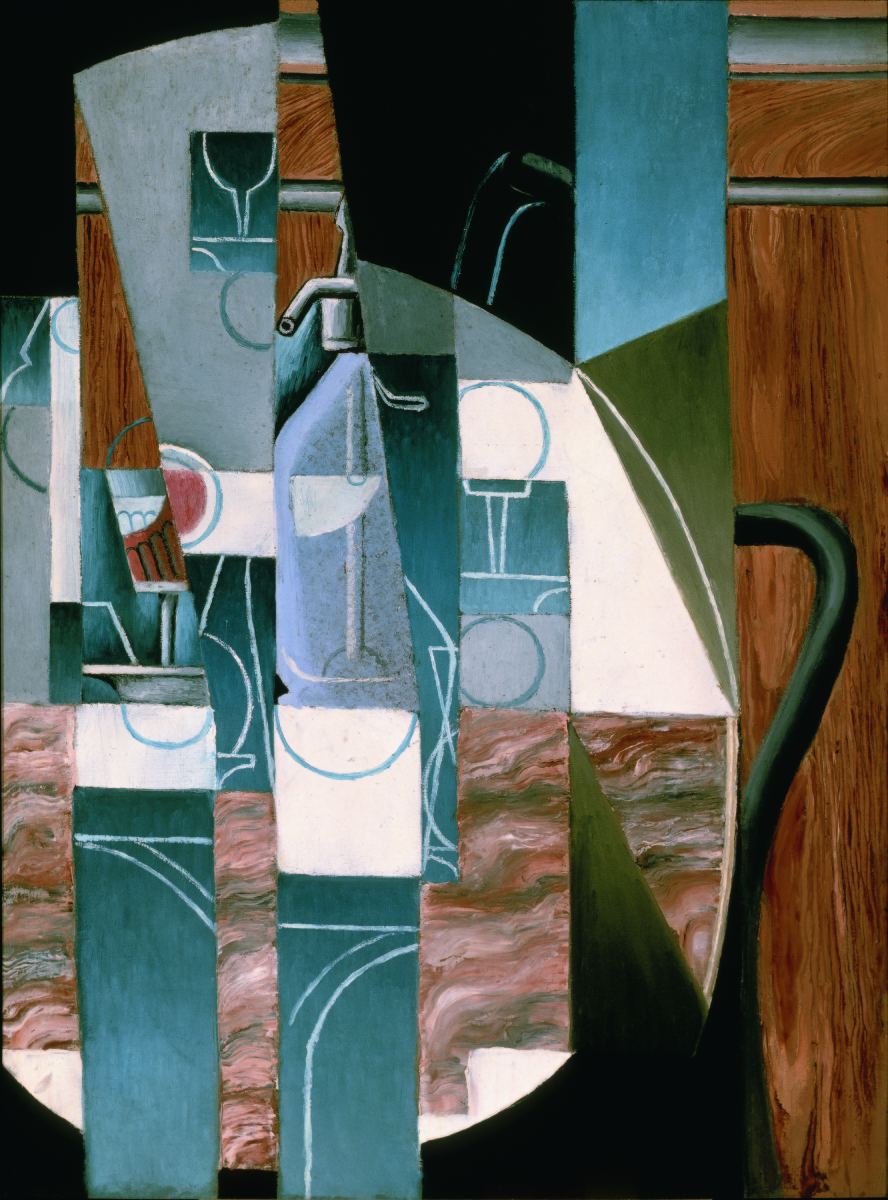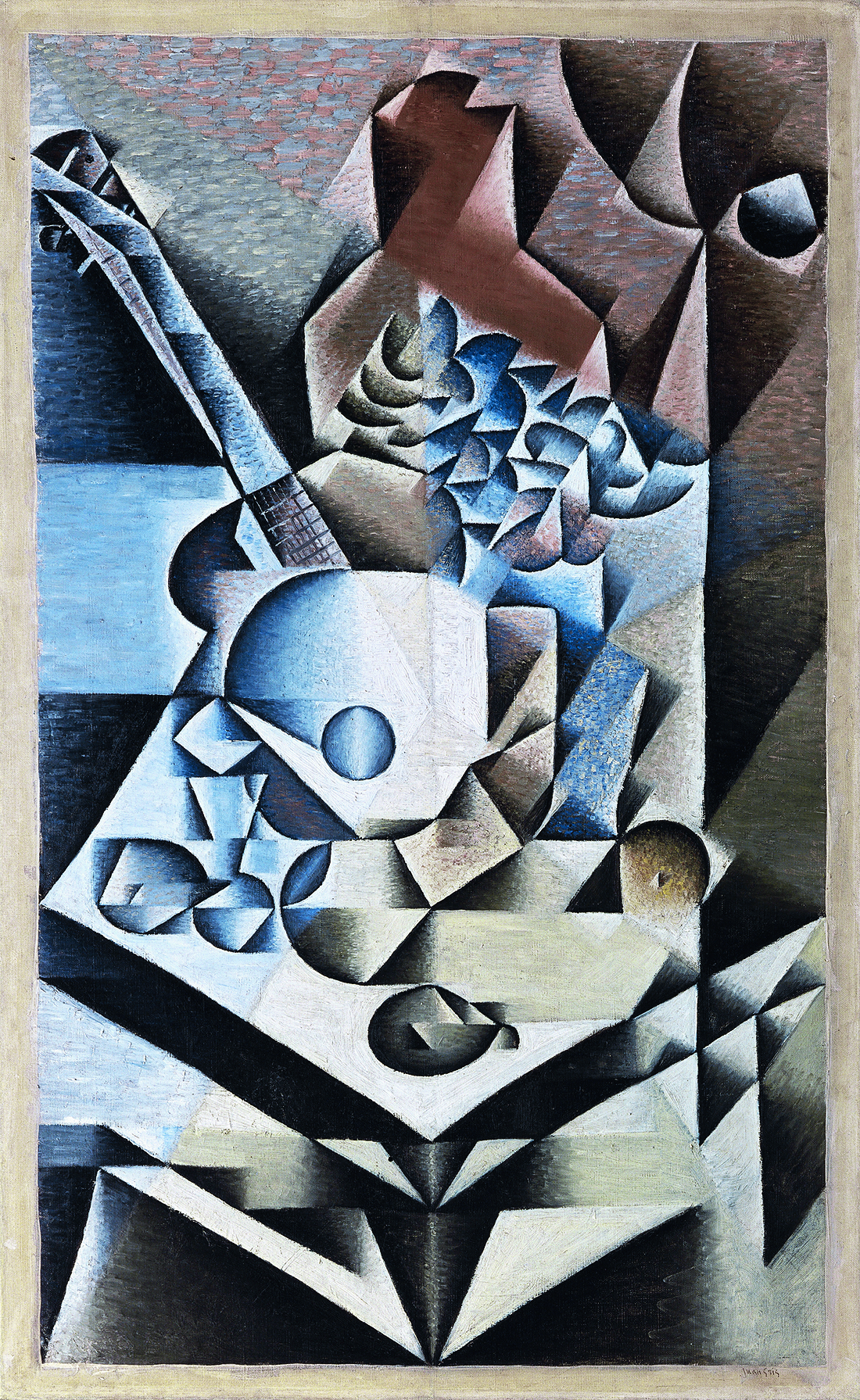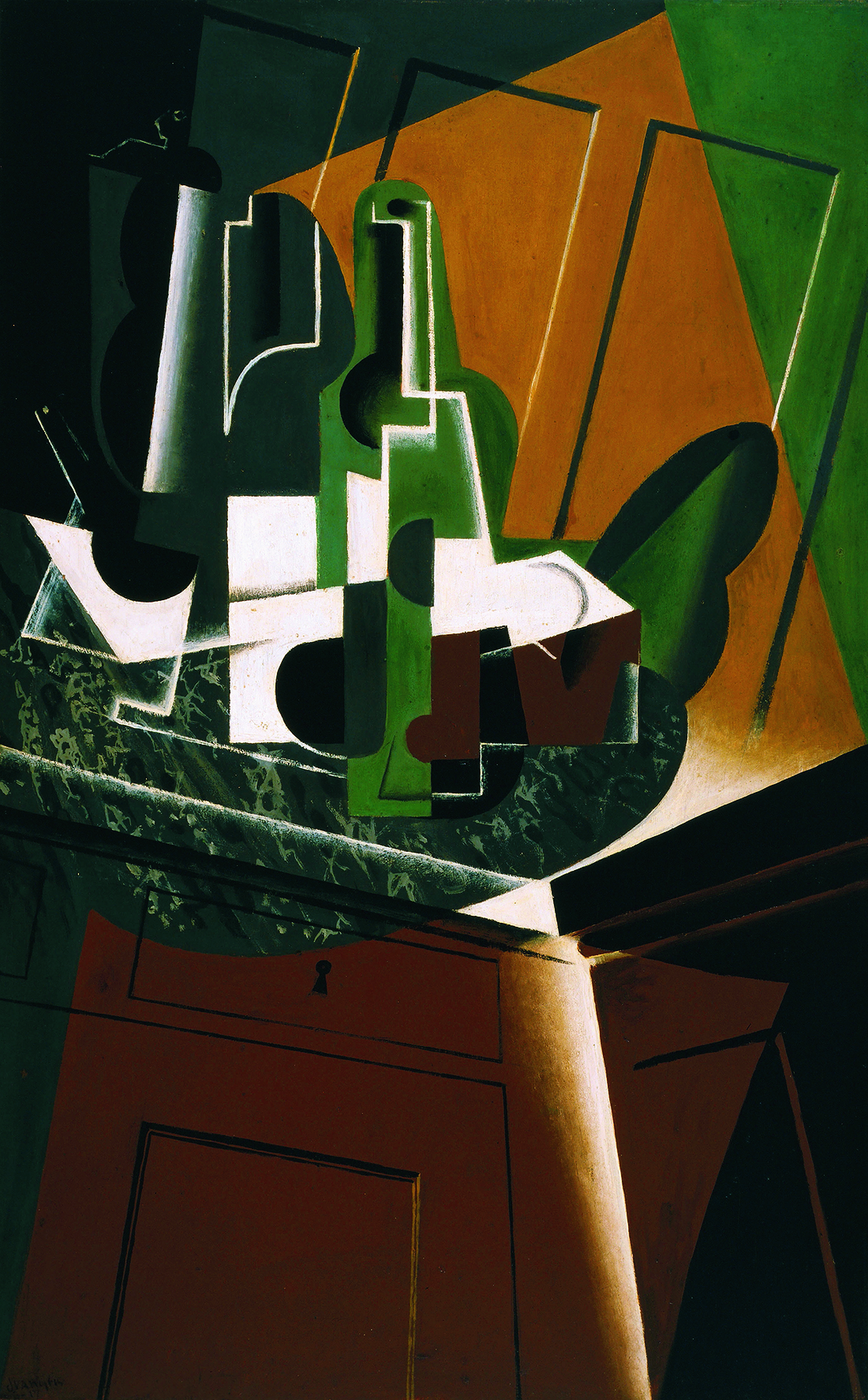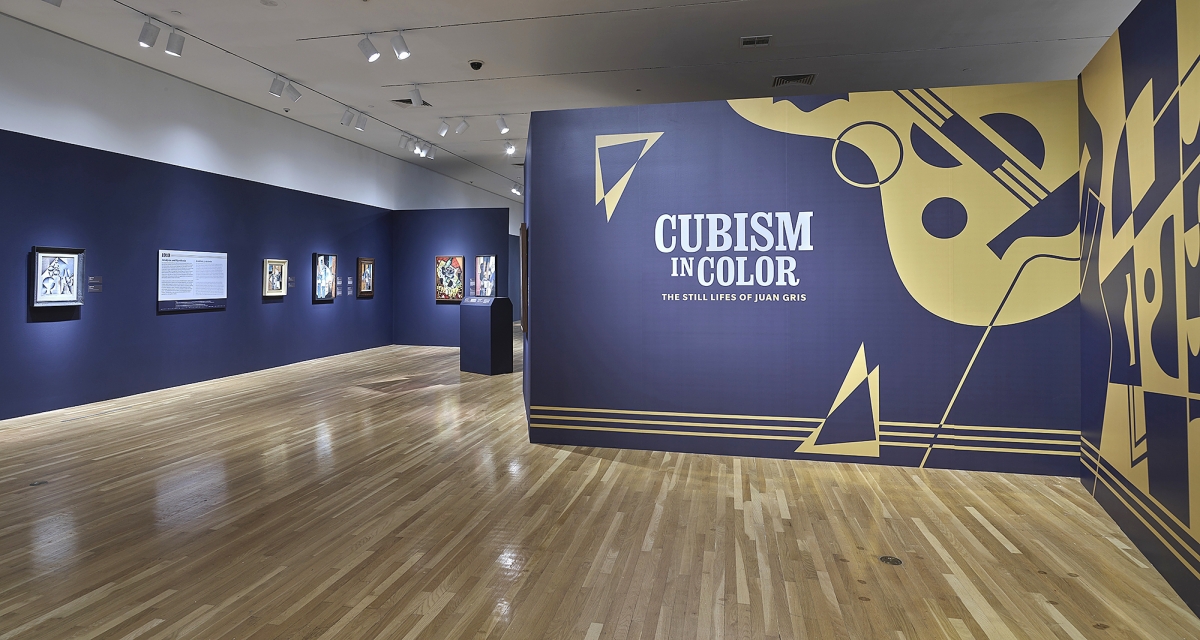
Installation of “Cubism in Color: The Still Lifes of Juan Gris” at the Dallas Museum of Art. Photo by Chadwich Redmon, courtesy Dallas Museum of Art.
By James Balestrieri
DALLAS – It’s hard to imagine an artist like Juan Gris, whose works regularly top $1 million at auction – and whose world record topped $50 million at Christie’s London in 2014 – as someone who hasn’t “made it.” The quotes around the phrase are appropriate, air quotes, as it were, because “made it” is a term that is both freighted with meaning and utterly meaningless – but that’s exactly what “Cubism in Color: The Still Lifes of Juan Gris,” the new exhibition co-sponsored by the Dallas Museum of Art and the Baltimore Museum of Art implies, addresses and attempts to redress.
It’s all relative. As Harry Cooper writes in “Decoding Gris,” his very fine introductory essay to the exhibition: “perception is deception,” which is equally true whether you are referring to one of the guiding principles of Cubism or to the arcana of canon formation in the arts.
There are four “greats” in Cubism: Picasso, Braque, Léger and Gris. Good company. Yet, in that company, Gris has somehow ended up as the caboose. He’s in the canon, but not a worldwide name like Picasso. He is not even as well known as Braque or Léger. And, of the four, he is labeled as the most conservative (another loaded term).
Why?
Cooper, who is the senior curator and head of Modern Art at the National Gallery, explains, with a poignant editorial parenthetical at the end of his summary: “In contrast to the radical inventors of Cubism, Georges Braque and especially Pablo Picasso, whom he called ‘dear master,’ Gris is often considered a conservative, for three main reasons: 1) his painstaking composing, sometimes involving preparatory drawings, most of which he destroyed, and his use of mathematical formulas, leading to equally painstaking execution; 2) his respect for the object – the glasses, bottles and guitars that he studied carefully, preserving their forms from the ruins of Picasso and Braque’s Analytic Cubism; and 3) the fusion of these two, of compositional logic and representational clarity, in pictures of ideal, harmonious, satisfying, intelligent, tasteful and classical unity and balance. (There, I have tried to capture all the clichés of the conservative view at once.)”
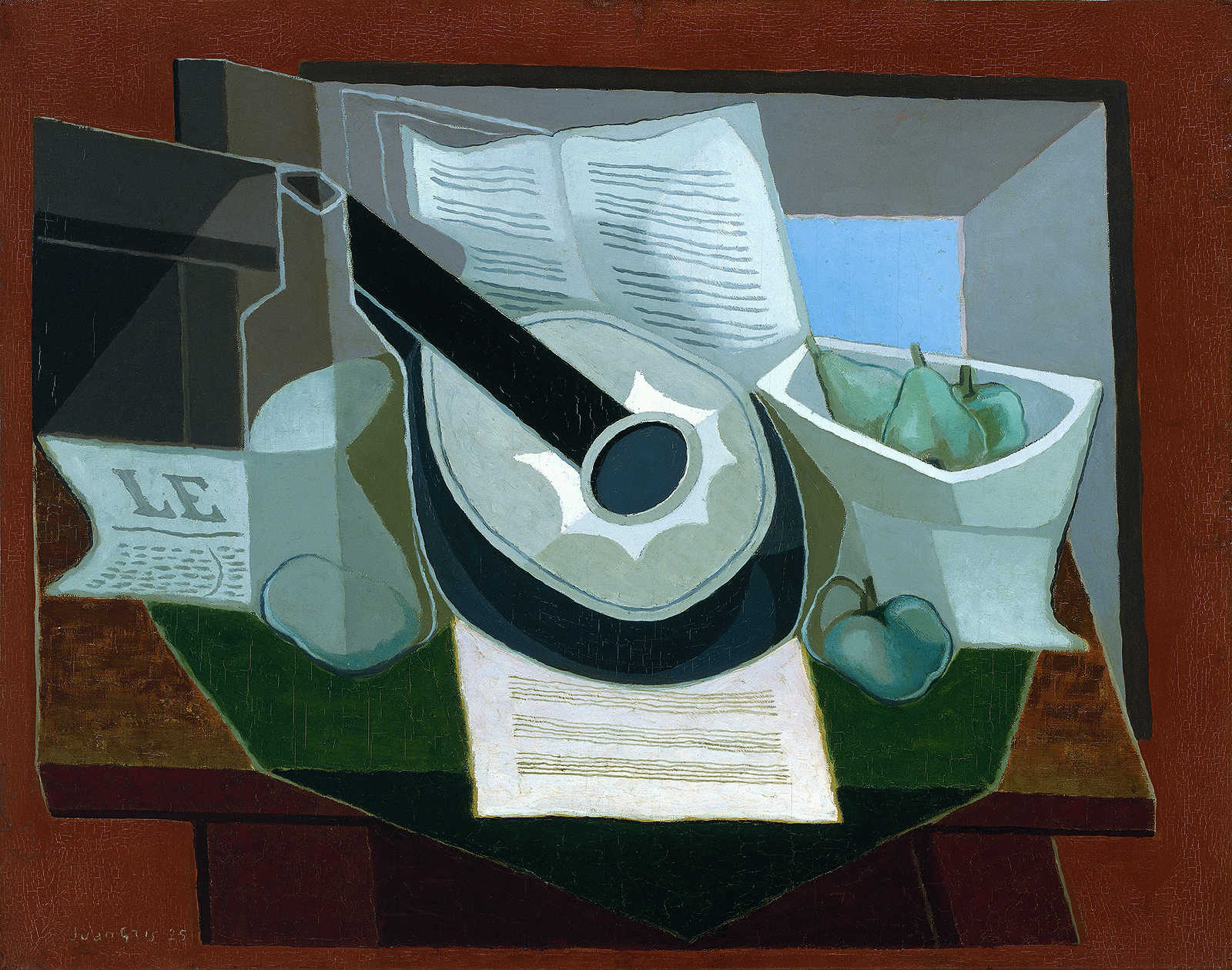
“Mandolin and Fruit Dish” by Juan Gris, 1925. Oil on canvas. Museum of Fine Arts, Boston. Gift of Joseph Pulitzer Jr. Photo ©2021 Museum of Fine Arts, Boston.
Juan Gris has other strikes against him as well. He died young, at the age of 40. He was a restless artist, adjusting his approach every few years. He was somewhat self-deprecating, referring to Picasso, for example, as “le maitre” – the master. After his death, as his reputation began to gather steam, the Depression, the Spanish Civil War, World War II and the lingering, anti-modernist stance of Generalissimo Francisco Franco devastated the arts in Spain and kept Gris at the edge of the limelight.
In her catalog essay, “The Early Reception of Juan Gris in America,” Baltimore Museum of Art senior curator of European painting and sculpture, Katherine Rothkopf, writes about an exhibition of Gris’ work at the Cincinnati Museum of Art in 1948: “In the introduction to the catalog, Edward H. Dwight laments Gris’ less-than-stellar reception in America, wondering why he was recognized later than he deserved. He posits that perhaps it was because Gris’ work was often used to explain the tenets of Cubism; it never was fully appreciated for its own beauty and complexity.”
This is interesting, hinting at the perils of being an “artist’s artist,” as it were, one whose work is “used to explain” a school, a technique, an ism. Juan Gris’ art, here, becomes that blueprint for Cubism, the way into Picasso, Braque, Léger, et cetera, whose own art is, as a result, “never fully appreciated.”
“Cubism in Color: The Still Lifes of Juan Gris” asks us to appreciate him and see what we see when we do.
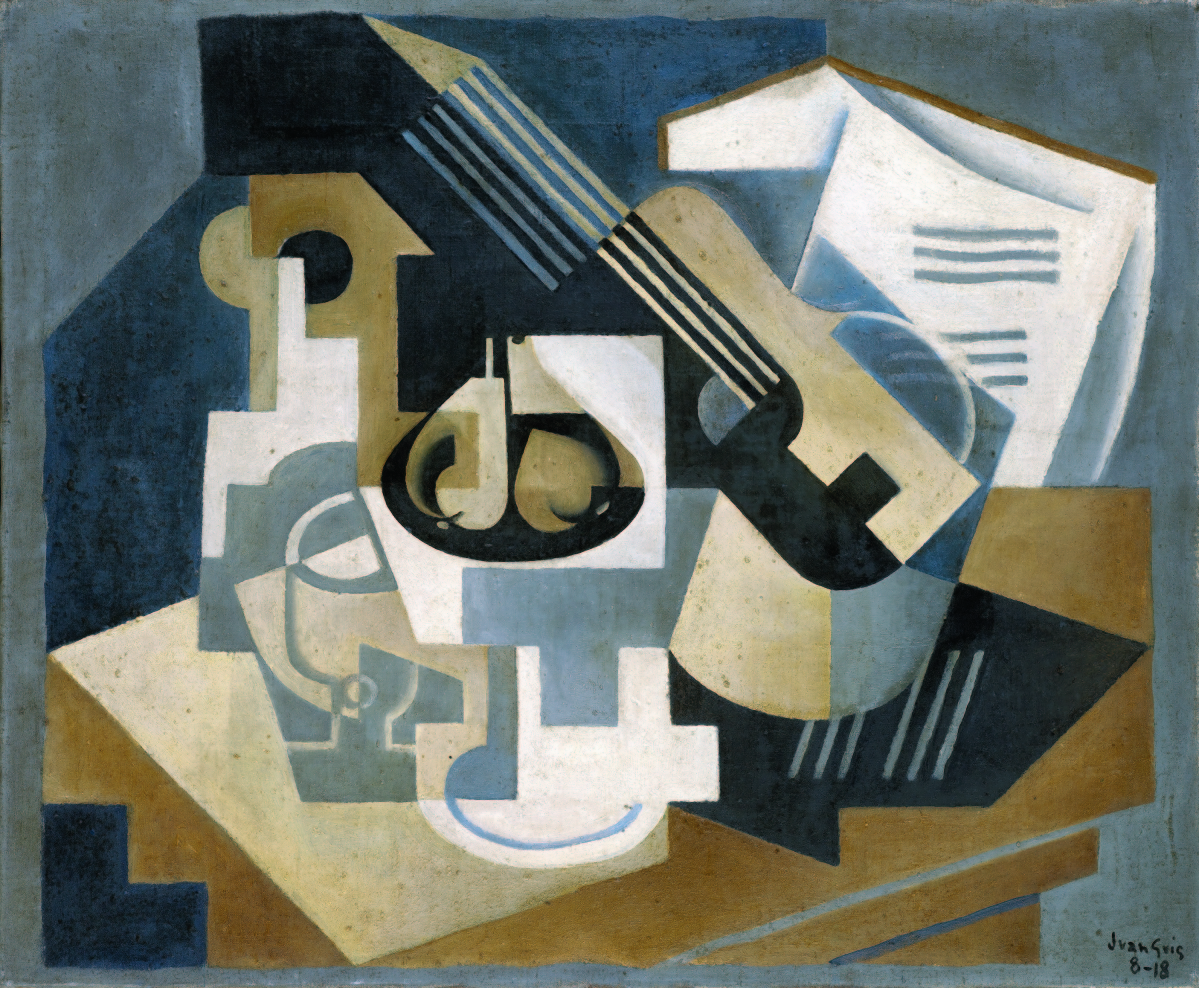
“Guitar and Fruit Dish on a Table (Guitar and Fruit Dish)” by Juan Gris, 1918. Oil on canvas. Kunstmuseum Basel, Gift Dr h.c. Raoul La Roche 1952.
In the beginning, the works of Juan Gris, born José Victoriano Carmelo Carlos González Pérez, were, well, gris, that is, gray. A 1912 painting, “Still Life with Flowers,” though already letting a little color in, gives you an idea of the artist’s early, limited palette. The fractal regularity of the repeated shapes is readily apparent and the gradations of color, and their alternations, come across as carefully planned. This is a painting by an artist working things out, groping towards a style.
Just a year later, in “The Siphon,” Gris has transformed the still life into strips of reality, moving them, as the catalog infers, like the wheels on an encoding device. This encoding creates new geometric shapes, sharps and curves, calling the attention of the viewer’s eye to the partial outlines of objects whose reality we take for granted. For Gris, the outline is a ghost, the spirit of a solid thing, perhaps. Such ghosts appear throughout his work. Color has crept in as well, linking moments in the picture plane, and the wood grain of the table and wainscoting imparts a wave-like sense of movement, as if we are seeing the fields of energy created by the assemblage.
In 1914, Gris has adopted and adapted the limited browns and collage technique of Picasso and Braque but has made it his own with greater reference to the dimensionality of transparent cylinders against a flattened background.
Again, a year later, in “Fantomas,” named for a suave criminal pursued by an equally suave detective – both of them masters of disguise – Gris plays with masking and unmasking, with the true and the false, the real and the artificial. Ghosts of objects rise from flattened, overlapping planes; crown moldings with their quotidian, repeated designs join wood grain. Nature returns to this nature morte.
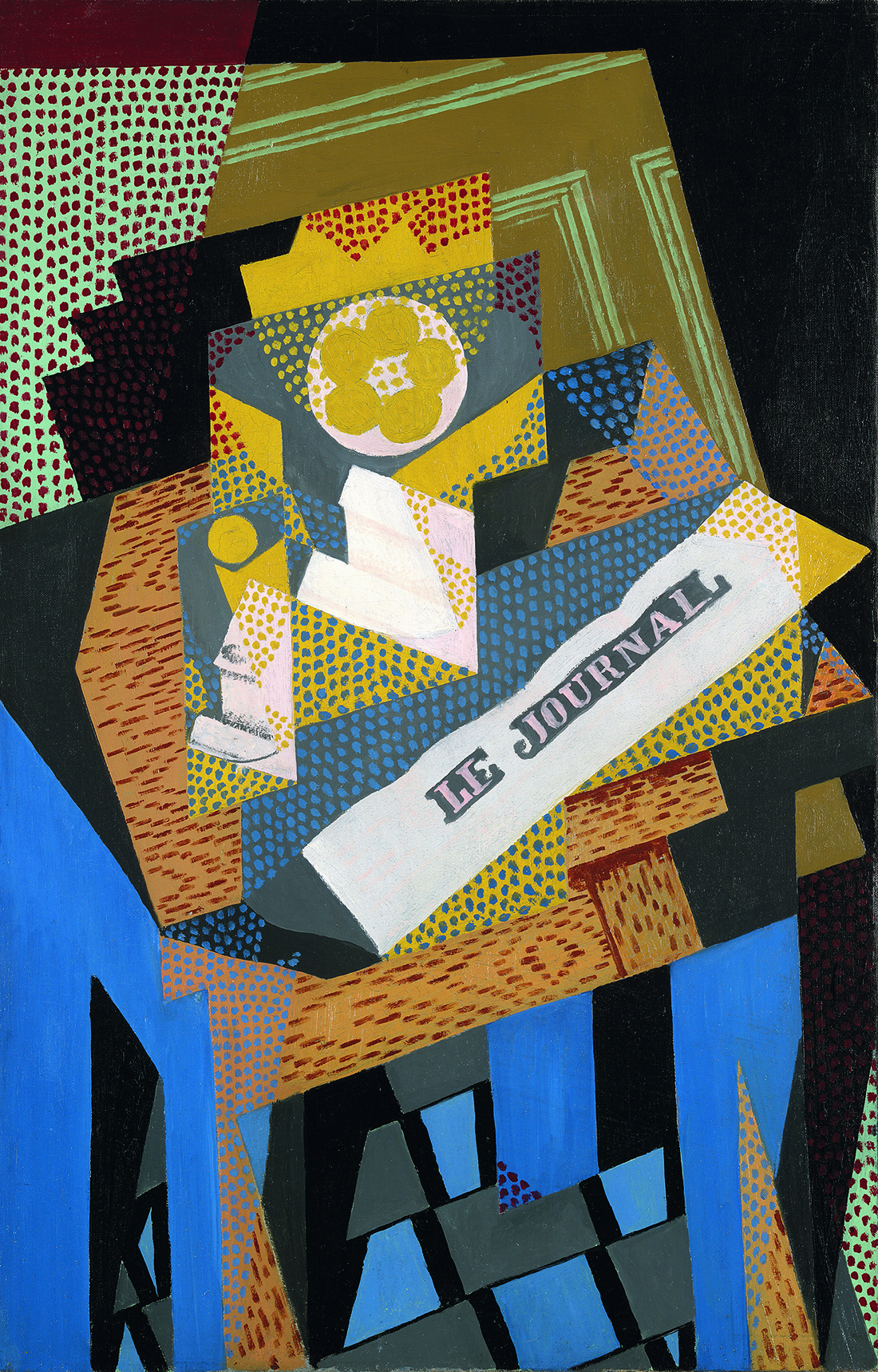
“Newspaper and Fruit Dish” by Juan Gris, 1916. Oil on canvas. Yale University Art Gallery, Gift of Collection Société Anonyme. Photo ©Yale University Art Gallery.
Over the remainder of his life, Gris adds and subtracts to his art. “Still Life Before an Open Window” links Gris, in my mind, to Italian Futurism, reintroducing and subverting repeated patterns found in reality. Consider the trees and shutters seen through the window in this work. Leaves filled in the electric blue quadrilateral at the top become lacework in the darknesses at either side. The shutters, open, ajar and closed, indicate time in an almost musical way.
Even as recognizable objects reenter his practice, Gris smooths them out, compelling their forms to interlock like jigsaw puzzle pieces. Fruits and musical instruments appear, and we can see Gris thinking now of the history of the still life, of the tenets of trompe l’oeil painting, of his Spanish forebear Zurbarán, whose 1633 painting, “Still Life with Lemons, Oranges, and a Rose” really creates the tensions among objects and the space around them that elevates the genre and opens the way for painters like Cézanne and the Cubists.
The exhibition also pays close attention to the lasting influence of Juan Gris on Latin American artists and movements; and on Joseph Cornell and his box collages.
In his short life and career, Gris looked around him and looked back, but he was always striving. Gris wrote of his progress to his dealer, Daniel-Henry Kahnweiler in 1919, saying of his work, “It has, so to speak, become more poetic. I hope that ultimately I shall be able to express very precisely, and by means of pure intellectual elements, an imaginary reality.”
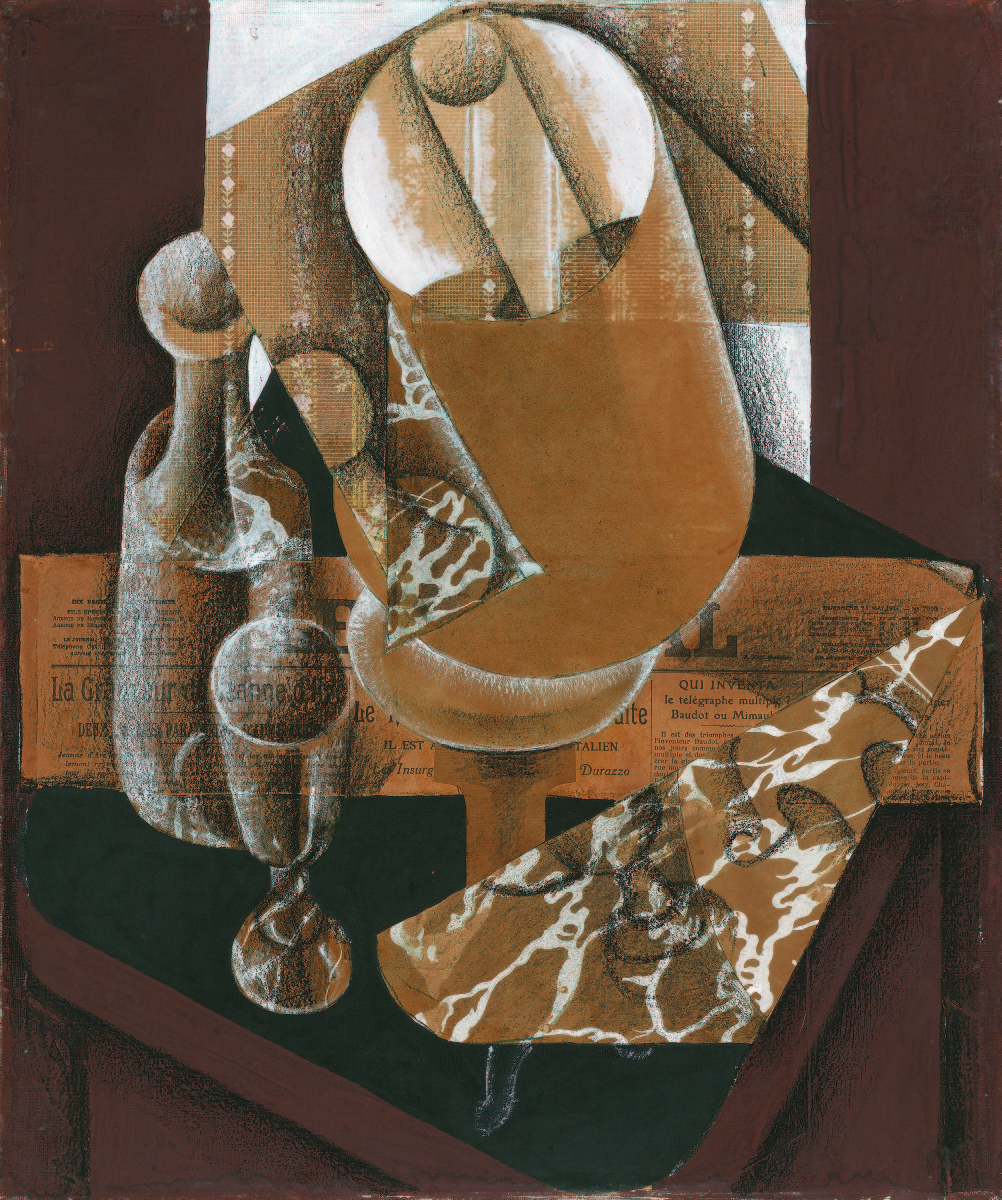
“The Lamp” by Juan Gris, 1914. Pasted papers, gouache and conté crayon on canvas. Private collection.
Mathematical coldness is a strange term to apply to someone seeking “poetry” and an “imaginary reality.” After all, is it a term we hear in relation to, say, Georgia O’Keeffe, or Ralston Crawford, or Fairfield Porter, or even Edward Hopper? Perhaps it’s an adjective we ought to hear when we think of them. After all, their clockwork compositions and smooth precision keep us at a deliberate distance.
But Gris? Cold? Perhaps, with Gris, what we know creates an impression. He used classical mathematical formulae, like the “golden section,” and there is a planned, blueprint quality to his work. We associate mathematics with rigidity and perfection, with the inhuman, and somehow that has transmuted into the idea of aloofness, bloodlessness, coldness. In truth, all of that is just language, a metaphor that only has meaning if we let it.
Art history is behind in its appreciation of higher mathematics, especially as math has advanced and branched out into areas like indeterminacy and chaos theory, merging with physics, chemistry and biology over the past half-century or so. Thinking of the balances of symmetries and asymmetries that Gris actively sought in his work, and the complex patterns he creates and repeats at different scales – fractals before the word was even coined – the first word that comes to mind isn’t cold – it’s elegant. Elegance that speaks eloquently of the tenuousness of the contours of the reality we think we see and know, a reality that is ever shifting, unstable and not to be trusted. Is it any wonder that Einstein’s special relativity challenged our notions of reality, uniting space and time and opening the door to quantum mechanics at the very same time that the Cubists were disassembling the realism that art had aspired to represent for millennia?
Elegant. Let’s see if – like the bottles and newspapers, the crown moldings and tabletops in his paintings – changing the way we conceive of him changes the way we see him. Art history has deceived itself into thinking Gris’ paintings cold. Let’s deceive ourselves into thinking Gris’ paintings elegant and see how our perception of the man and his art changes. Think of Juan Gris, like the characters in his beloved “Fantomas,” as a debonair, tuxedoed criminal with a mask and a blade, Fred Astaire to Picasso’s Gene Kelly. Juan Gris, the elegant Cubist.
The exhibition continues through July 25. The Dallas Museum of Art is at 1717 North Harwood Street. For information, www.dma.org or 214-922-1200.

